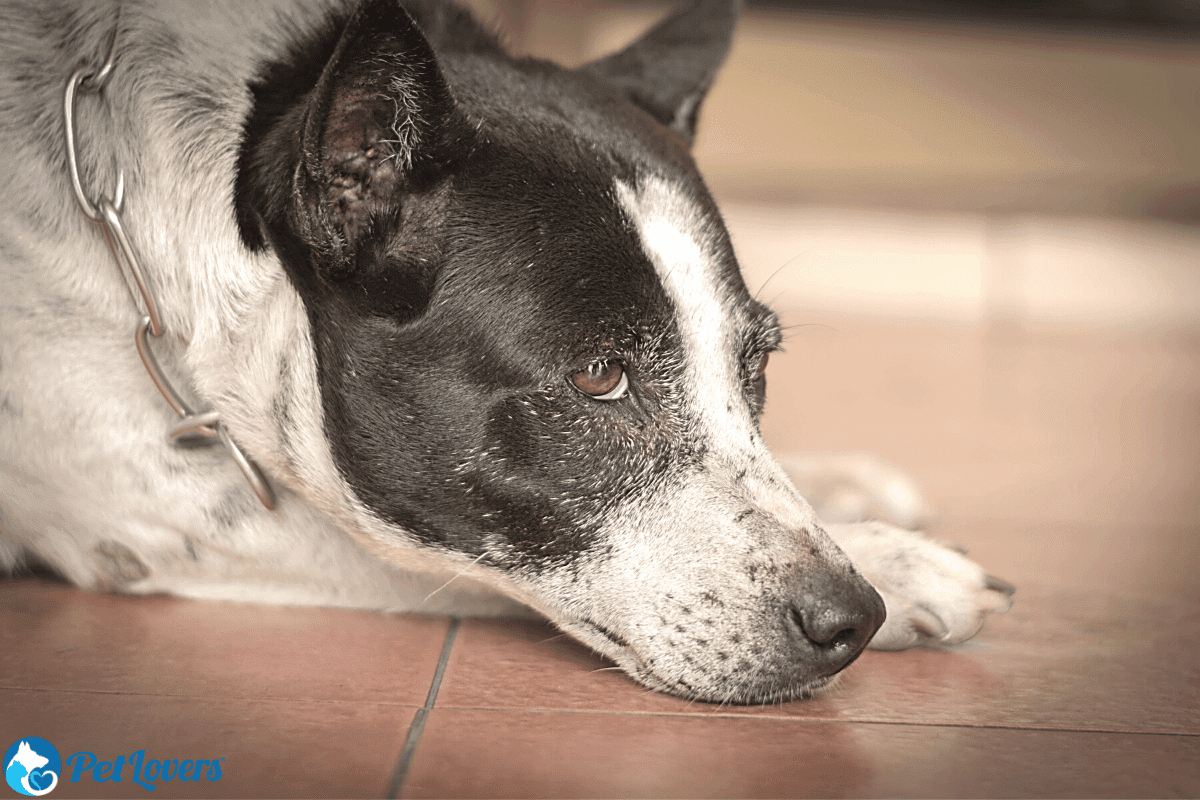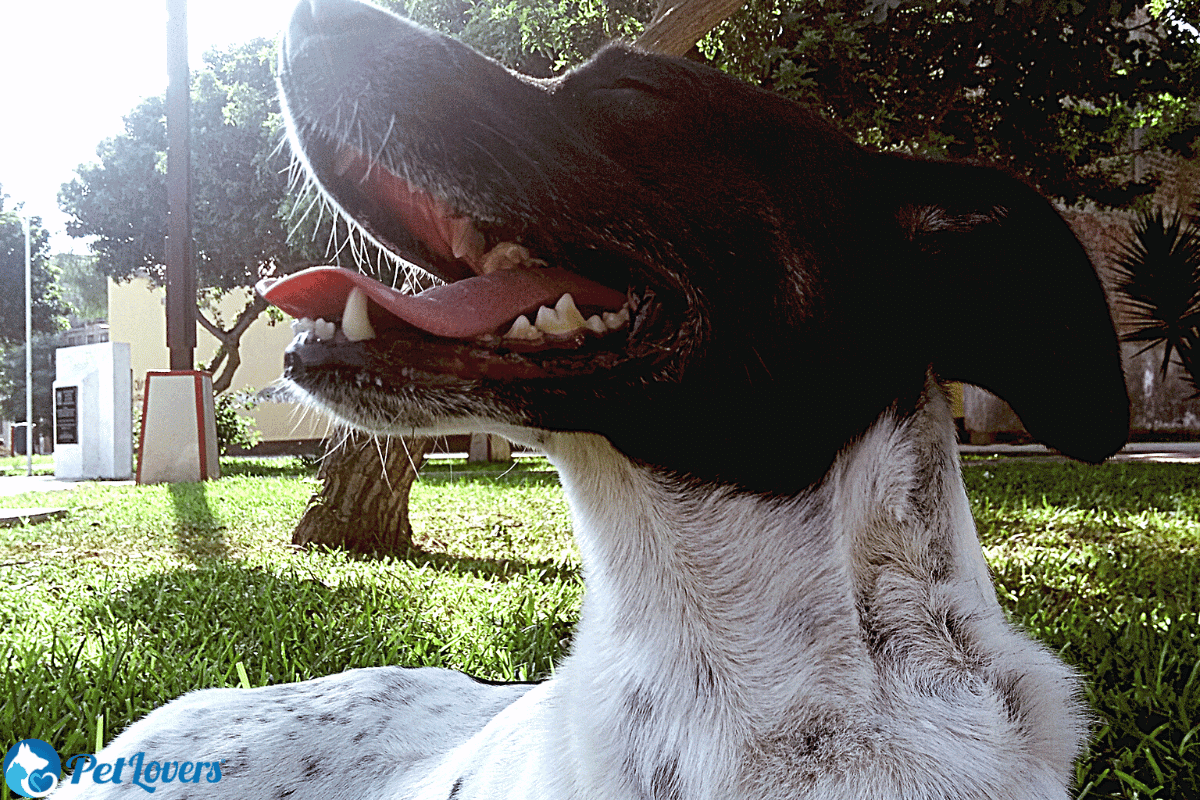Types Of Dog Brushes
Grooming your dog regularly helps minimize shedding, control where that loose hair falls, and improve the health of your dog’s

If you have seen your dog’s fur changing color in spots, it is most likely nothing to worry about. Of course, spotting any changes in your dog can be alarming, and even more so once they enter their twilight years. With this being said, there are natural changes that dogs will go through, much like humans, that are simply part of the aging process.
A dog’s fur changing color is the perfect example of this. If this is the case, and you have seen color changes on your dog’s fur, here is why it is happening and whether or not you should be concerned.
Table of Contents
Is your dog’s fur changing color in spots? It will more often than not happen one spot at a time. No matter what the reason behind a dog’s fur color change is, it is almost impossible that every pigment will change color at once.
As soon as you have noticed a spot of color appearing, you should get your dog checked out, just to be sure. This is usually nothing to worry about, but this could be a sign of a more severe ailment. Let’s take a look at some of the most common issues behind your dog’s fur changing color.

Without question, the most common issue here is aging, nothing more, nothing less. You have probably noticed already that your dog’s fur has changed since they were a pup. That lovely soft mane gives way to a more rugged covering of fur as the years go by.
In the same way that the texture of their fur changes, so too can the color. Much like human hair greying over the years, dog fur also loses pigments as your pooch reaches its senior years.
Often you’ll find that something as simple as the seasons changing can be enough to change different areas of your dog’s fur. This is much more likely to happen in the warmer seasons.
With more exposure to sunshine, you can expect to see light spots of fur across your dog’s coat. This is because the sun bleaches the melanin in hair, creating a lighter hue on several areas of your dog’s fur.
If your pooch licks a particular area of its coat excessively, it can very easily change the color of that part of the dog’s coat. This is because of a chemical called porphyrin, a natural pigment found in your dog’s saliva.
As the dog licks itself more and more, it will deposit porphyrin on the fur, eventually staining it with a deep crimson tone. The lighter your dog’s fur is, the more likely you will notice this spot of color appearing.
We should mention here that neither the excessive licking nor the consequential color change is going to cause any damage. What you should know, however, is that excessive licking is almost always a sign of a deeper problem. If you notice the dog licking itself in this way, it is worth getting them checked out.
Porphyrin is not only present in saliva but also in your dog’s tears. This is one of the most common reasons for spots of color appearing around the eyes.
Dogs with an excess of hair around the eyes are more likely to have stains of color because the tears cannot go anywhere once they have left the tear ducts around the eyes. This is a very common issue and rarely something that you should be worried about. Lighter dogs are much more likely to present these stains than those with darker fur.
If your dog has never shown these stains before and they appear in a short space of time, it is worth getting your dog checked out. It may be that there are issues with the tear ducts, an infection, or an allergic reaction.
Most of you will probably be aware that alopecia causes hair loss, but it can also cause color changes in the hair. A color change is usually the first sign of alopecia in your dog.
Post-clipping alopecia is the term used to refer to dogs that lose hair color, or hair after they have been in surgery. Additionally, this can occur in dogs after a wound has healed. This most frequently happens with breeds like golden retrievers or labradors, or any others that have these thick double coats.
As wounds heal, the pigment in the skin may have been damaged, resulting in a change in color at the site of the injury. Another reason why your pooch may have color spots on their fur is if they had surgery or have been recently injured.
Impressively, your dog’s body will overproduce melanin around the wound, to help with the recovery. This can lead to spots of fur that are much darker than they were before the wound happened. Before the surgery, the doctor will shave around the area, and the hair may not grow back exactly as it was before the surgery.
There are several health issues that your dog may face, that can upset the body’s natural hormonal balance. The imbalance of hormones can have all sorts of effects, and changing the color of fur in various areas is just one of them.
Take hyperthyroidism as an example, a reduction in thyroid levels. This ailment upsets the dog’s natural hormone levels. The result of such a condition can be dry skin or skin infections, hair loss, or a change in hair color.
More often than not, a hormonal imbalance is the result of a deeper issue for which your dog will need some level of treatment.

For the most part, seeing spots of color on your dog’s fur is harmless, but we cannot ignore the fact that it could potentially be a serious medical condition. Let’s look at three conditions that could cause a dog’s coat color to change.
Vitiligo is a condition that results in the depigmentation of various patches of your dog’s fur. This could result in your dog losing pigment across the entirety of its body, or just in patches.
It is not known why dogs get this condition, but you’ll be pleased to know that there is no real danger here. Vitiligo doesn’t cause any pain or discomfort, it is not contagious and it most often occurs in dogs at a young age.
As you will know only too well, dogs have few limitations when it comes to getting into places where they probably shouldn’t. From long grass to water, trash cans to bogs, if they’re interested, they’ll dive in.
Beyond just getting dirty or wet, however, dogs can also pick up parasites when they are roaming around. Pick up the wrong parasite and you may see a change in their fur.
Many parasites will damage the follicles of your dog’s hair, resulting in new patches of color. These are the parasites you’re most likely to find that cause this:
You will usually find that if your dog does have parasites, they will present more symptoms than just a change in hair color. Pay attention to the behavior of your dog. If they scratch excessively or appear tired and lethargic, this could certainly mean that they have issues with these little freeloaders.
Cancer is understandably a scary disease to think about, but it is a sad reality we cannot ignore. Several cancer types can alter the appearance of your dog’s fur. Skin cancer, thyroid, pituitary, or adrenal cancer can all contribute to skin changes and follicle damage.
If you see your dog’s fur change color in patches, don’t instantly assume that they have cancer. Instead, try to eliminate more likely causes first. While cancer is rarer than other options on this list, it is always worthwhile having your dog checked over by a vet, just in case.
As your dog ages, it requires different levels of nutrition to ensure that they are at its best. All dogs require high-quality fats and proteins, copper, zinc, and essential fatty acids. Older dogs, however, need increased levels of nutrients to combat their aging bodies.
If your pooch isn’t getting the levels of nutrients that it requires, it can present issues like dry skin, sores, and a change in the color and quality of its coat. Make sure that your dog is consuming high-quality, nutrient-rich dog food. If you are in any doubt as to what your dog should be eating, consult your vet for some advice.
If you have noticed a change in your dog’s coat, you shouldn’t be overly worried. There are many potential reasons for this, that can be easily treated. With this being said you should be checking for any changes in your dog’s hair, and get issues checked out sooner rather than later.
Even though the probabilities are low, the fact that this could be a sign of something serious means you should get your dog to the vet for a checkup. If you have seen a change of this kind, find out what is causing it to give you peace of mind and to get your dog back to its best.
If your dog has tear stains then you can easily clear this up with a home remedy. Take a tablespoon of peroxide with 8oz of water. Dab a cotton ball in the solution and then gently wipe around your dog’s eyes.
Repeat this daily until you see an improvement in the color around the eyes. Remember to check with your vet first, to ensure there is no medical condition causing the stains.
As with any changes in your dog’s behavior or appearance, it is always worth getting your pooch fully checked over. This is especially true if you notice that their fur has changed color. In most cases, this will be nothing for you to worry about at all, but it is best to play it safe and seek professional advice.
 PetLovers
PetLovers
Grooming your dog regularly helps minimize shedding, control where that loose hair falls, and improve the health of your dog’s
Have you begun to notice a little more cat fur around the home than you are used to? Most cat
A slicker brush is one of the most essential tools in your dog grooming arsenal. This product can do it
TO GET 15% OFF ON ALL YOUR PURCHASES